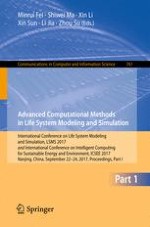The three-volume set CCIS 761, CCIS 762, and CCIS 763 constitutes the thoroughly refereed proceedings of the International Conference on Life System Modeling and Simulation, LSMS 2017, and of the International Conference on Intelligent Computing for Sustainable Energy and Environment, ICSEE 2017, held in Nanjing, China, in September 2017. The 208 revised full papers presented were carefully reviewed and selected from over 625 submissions.
The papers of this volume are organized in topical sections on: Biomedical Signal Processing; Computational Methods in Organism Modeling; Medical Apparatus and Clinical Applications; Bionics Control Methods, Algorithms and Apparatus; Modeling and Simulation of Life Systems; Data Driven Analysis; Image and Video Processing; Advanced Fuzzy and Neural Network Theory and Algorithms; Advanced Evolutionary Methods and Applications; Advanced Machine Learning Methods and Applications; Intelligent Modeling, Monitoring, and Control of Complex Nonlinear Systems; Advanced Methods for Networked Systems; Control and Analysis of Transportation Systems; Advanced Sliding Mode Control and Applications; Advanced Analysis of New Materials and Devices; Computational Intelligence in Utilization of Clean and Renewable Energy Resources; Intelligent Methods for Energy Saving and Pollution Reduction; Intelligent Methods in Developing Electric Vehicles, Engines and Equipment; Intelligent Computing and Control in Power Systems; Modeling, Simulation and Control in Smart Grid and Microgrid; Optimization Methods; Computational Methods for Sustainable Environment.
